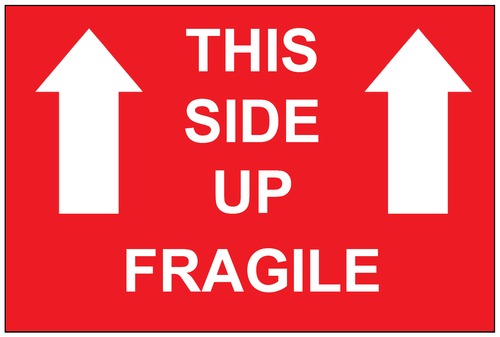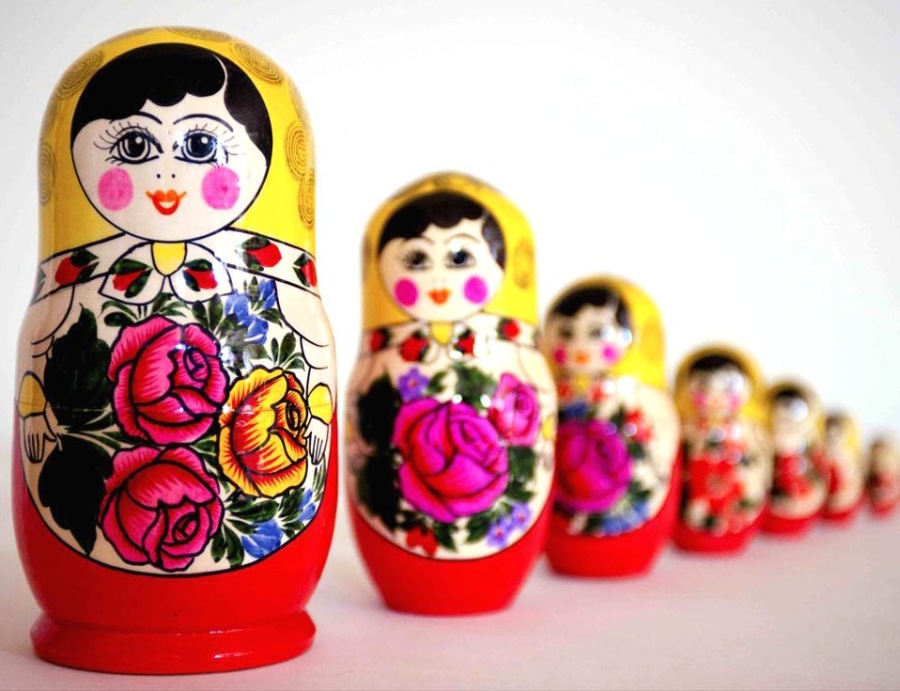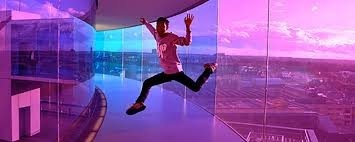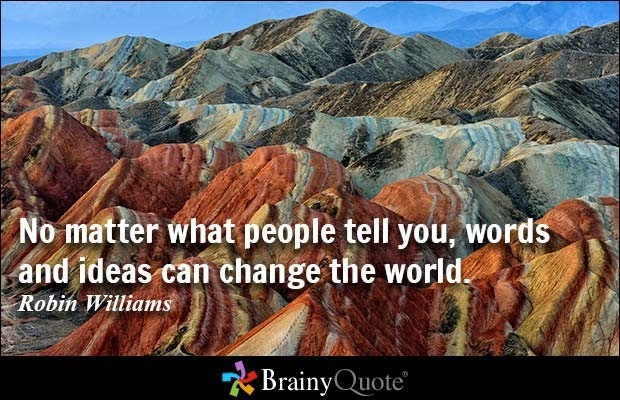Which way is up?

INTRODUCTION
It is my job to help individuals “make sense” of things and be able to understand what often lies “beyond words”.
As sensory beings, I work within the framework that we form meaning from information processed through our sensory system; we form experiences, associations and attach meaning to these.
The communication route we take from the non-verbal experience to its verbal destinations involves our use of imagination, creativity, metaphors, paradoxes and storytelling.
No communication or expression takes place without this process. We create first, think later.
I refer to the title: Which way is up? What does it make you think of, associate with, or react to?
By definition it “means that the person is confused or disoriented.”
And because communication is a complex system, it will lead to confusion more often than not. This is why we find a plethora of articles, books and training in the “how” of communication.
It's all about cmmnctn!
I am thrilled to see the pendulum swing my way and witness business embrace creativity. I see an increase number in the use of paradoxes in articles, I read about how to enhance our creativity to solve problems, how to use storytelling to get our audience to hear and connect to what we are saying, and how to use metaphors for branding.
At the same time, I am definitely concerned about how these strategies are being used. Most of the time they appear as part of the new jargon of what can “successfully” boost our ability to get our message across; the “magic” or “secret” to that success. As such, the essence of what each word represents, and its potential, is lost.
What all paradoxes, metaphors and stories or narratives have in common is that they reflect human experience, they hold both individual and common meanings. They are not cookie cutter ideas or templates to be used in a certain way. They need to be understood and applied in a meaningful manner.

Part One: Paradoxes
A metaphor about paradoxes.
"It is time to acknowledge that paradox is a thread that is woven through the fabric of life. You may be able to tug on it, but pull too hard and the fabric begins to unravel. - SJ
Paradox is defined as “something (such as a situation) that is made up of two opposite things and that seems impossible but is actually true or possible.”
Within the definition of paradox there is an embedded paradox: The impossible can be possible.
A paradox can integrate opposites. Opposites do not exist; opposites are created. In both our personal and professional lives, it is more manageable to work with ideas, strategies, plans, goals, relationships, feelings and so on, if we place them in an opposite:
Life/Death; Good/Evil; Right/Wrong; Pleasure/Pain; Love/Hate; Beautiful/Ugly; Rich/Poor; Success/Failure; to name just a few.
These states, however useful they are in organizing ourselves, do not exist; they have been created by us to help us make sense of who we are, in relation to others, and our environment.
Opposites, as adjectives, describe, “a position on the other or further side of something; diametrically different; of a contrary kind.” This adjective can be applied as a means to clarify a part of a whole but is not accurate if it is to define a place that is separate or distinct from another.
Herman Hesse writes about a place beyond opposites:
"Our mind is capable of passing beyond the dividing line we have drawn for it. Beyond the pairs of opposites of which the world consists, other, new insights begin.
We are equipped with an innate mechanism that enables us to deal with dualities. Homeostasis is defined as “the tendency of the body to seek and maintain a condition of balance or equilibrium within its internal environment, even when faced with external changes."
Question: How can a paradox enable communication?
Answer: A paradox can integrate the dualities and allow us to understand the larger perspective.
The developmental side of paradox.
Being independently dependent, fulfills the definition of a paradox as it seems to be saying two opposite things but that may be true.
Alison Gopnik writes in her book, The Philosophical Baby: What Children's Minds Tell Us about Truth, Love ..., about the dependent side of the paradox.
"What is childhood? It is a distinctive developmental period in which young human beings are uniquely dependent on adults….Human beings have a much more extended period of immaturity and dependence, a much longer childhood, than other species… " (2011, p.10)
Winnicott, a pediatrician and psychoanalyst, expands on this when he describes his theoretical concept of a “holding” environment: an environment that allows you to safely feel taken care of, protected, understood, accepted unconditionally, and held in such a way that your consciousness which, at the beginning of human development is unformed, fluid, and changeable, can grow spontaneously and naturally on its own. (Excerpt from The Holding Environment)
The paradox that is created as a result of this theoretical concept is: In order for an infant to develop a sense of self as independent from others, it is dependent on the other to provide the environment in which to develop this sense.
The meaning of this paradox carries over into all aspects of our lives. Winnicott’s quote reinforces that attachment is a crucial factor in business success. If you are in business without developing attachments, success will be a challenge in the making. And I don’t just mean “you can’t do it alone” or “you need to surround yourself with a supportive team”, etc. I mean; if you do not develop an attachment to at least one person in your striving to succeed, the potential of success cannot be realized.
For entrepreneurs, CEOs, managers or team members, a business attachment is formed when you give up the idea that the work and success are yours alone. Your dream, vision, drive, motivation, persistence and all the other qualities you need in your toolbox for success are unique to you, as is your fingerprint, but there are people out there who hold parts of those qualities, shaped in their unique way, that can attach to yours in a perfect fit. Being connected is “like-minded”. Being attached is “forming an extension” of your business self.
We exist in this paradox; we are individuals who fight for individuality while we are social animals who depend on community.
Part Two: Metaphors
Michael Michalko (2012) states that "creativity, no matter which of its many definitions you favor, requires looking at the world in a different way and trying fresh approaches to problems. An easy way to shake up your thinking is metaphorically. A metaphor is a figure of speech in which a word or phrase that means one thing is used to describe an object or idea to which it is not literally applicable."
When we think metaphorically we utilize our ability to imagine. Our imagination is given expression through the non-verbal (visual symbols) and verbal language of metaphors. The metaphor is "out there" to make it possible for us to hear, see and experience things "in a new light which, in turn, may lead to solutions that might not otherwise be anticipated." (Michalko, M. 2012)
Metaphors permeate human thought and action (Lakoff & Johnson, 1980). As such, becoming conscious of their use, and applying this language in a stimulating and meaningful way, will provide thinkers; critical, divergent, scientific, or otherwise, with the means to creatively express their thoughts, ideas and solutions to the problems being addressed.

The metaphor of the Russian Dolls.
A set of matryoshkas consist of a wooden figure which separates, top from bottom, to reveal a smaller figure of the same sort inside, which has, in turn, another figure inside of it, and so on.
Matryoshkas are used metaphorically, as a design paradigm, known as the "matryoshka principle" or "nested doll principle". It denotes a recognizable relationship of "object-within-similar-object" that appears in the design of many other natural and crafted objects. Examples of this use include the Matrioshka brain and the Matroska media-container format.
Image credit: Guild Wars 2 Forum
The onion metaphor is of similar character. If the outer layer is peeled off an onion, a similar onion exists within. This structure is employed by designers in applications such as the layering of clothes or the design of tables, where a smaller table nests within a larger table, and a smaller one within that.
The Matroska (MKV) multimedia container format derives its name from Matryoshka, alluding to the container being able to hold many different types of content streams. (wikipedia)
Part Three: Storytelling
The act of storytelling is a central part of who we are. Stories help make sense of our world and our place in it and we define ourselves by a story within time. We create stories; verbally, oral and written, and non-verbally, through movement/dance, visual symbols and signs/visual arts, and sound making/music. Where there is life, in any form, there is communication. But only humans tell stories.
Here is a current example of how a LaRae Guy tells a story from her personal life to communicate a perspective relevant to our business lives.
"I learned how to remove obstacles on our cattle ranch by saddling up a horse and riding through cow herds to get them to greener pastures. If a lazy cow did not want to move, it was my job to push her along until the entire herd was together.
My Dad taught me to saddle and ride horses, rope steers, and herd cattle when I was in grade school. So no one was more surprised than me when Dad brought home a couple of four-wheel ATVs a few years ago and used them, instead of horses, to check on the cattle.
The ATV looked much easier to ride than a horse when I first saw it and I was anxious to try it out! Dad took off first and I followed. The terrain on our ranch is mountainous, however, so I soon found myself sideways on a steep hill and in danger of tipping over. Suddenly, this huge motorcycle on four wheels looked more dangerous than any horse I’d ever ridden.
To go headfirst down the steep hill and over the cliff appeared even more dangerous, so I continued to inch my way down sideways—it seemed the safer router. By now, Dad had stopped his ATV and was running toward me.
“Turn your wheels straight downhill,” he shouted. “Only by facing it head-on can you get safely down the cliff,” he said. Slowly, I turned the wheels straight down the steep embankment ahead of me, and the ATV started to move forward. I made it safely to the bottom.
Turns out that leaning into the unknown is the best way to remove obstacles. While in new agent’s class at the FBI Academy, our instructors continually placed us in training situations where we were required to remove obstacles. For many of us, our first reaction was to either pull back or take circuitous routes around the obstacle. But the message by our instructors was this: Only by moving into the unknown are we be able to explore it.
To increase safety, move toward the unknown.
To increase chances for success, move toward the challenge.
The closer we get to the unknown, the more we can educate ourselves about it. The steps to follow and actions to take may not reveal themselves to us until we have moved closer to the situation. Mountain climbers understand that it’s impossible to know where to place fingers and feet by looking at a mountain from the bottom. Only by getting close enough to explore the cracks and crevices can they find places of safety.
A great deal of my FBI training was learning how to lean into the unknown so we could remove obstacles. Entrepreneurs, business owners, and leaders can do the same."LaRae Guy
The beauty of storytelling is that it embodies our imagination, and uses paradoxes and metaphors, to communicate.

Final words!
Please don’t go for the “quick fix”, or look to discover the “secret” to communication. Go back to your first language, the language of creativity, and reconnect with your innate ability to communicate. This will naturally lead to your success.
Image credit: fun""""Articles from Sara Jacobovici
View blog
Welcome to Wednesday Word(s) of the Week at beBee: WWW.beBee · My contribution for this week is · a ...

Image credit: steveoatesblog - WordPress.com · With Q&A@beBee, I ask some of the most interesting pe ...

I am sure you can relate to my experiences of being drawn into dynamic posts and discussions. It is ...
Related professionals
You may be interested in these jobs
-
חוקר/ת כימיה אורגנית
Found in: beBee S2 IL - 4 days ago
Teva Pharmaceuticals Be'Er Sheva, Israelמי אנחנו احنا؟ · יחד, אנחנו שותפים למשימה להפוך את בריאות טובה לברת-מימון ונגישה יותר, כדי לעזור למיליוני אנשים ברחבי העולם ליהנות מחיים בריאים יותר. זו המשימה שמאחדת את האנשים שלנו בכ-60 מדינות, על פני מוצאים ורקע עשירים ומגוונים. המשמעות של עבודה כאן היא עבודה עבור יצרנית התרופ ...
-

Senior SAP Solution Architect
Found in: beBee S2 IL - 10 hours ago
Amazon Tel Aviv, Israel· AWS Sales, Marketing, and Global Services (SMGS) is responsible for driving revenue, adoption, and growth from the largest and fastest growing small- and mid-market accounts to enterprise-level customers including public sector. The AWS Global Support team interacts with leadi ...
-
חרט/ת לאתר רותם
Found in: beBee S2 IL - 3 days ago
ICL Group Dimona, Israel· חברתנו מחפשת חרט/ת מוכשר/ת ומנוסה המעוניין/ת להצטרף לצוות בית המלאכה באתר רותם, ולהנות מתנאי העסקה מצויינים · אנו מציעים עבודה מאתגרת ומעניינת בסביבה יצרנית הכוללת טכנולוגיות ייצור מתקדמות · תיאור היחידה / מחלקה · בית המלאכה המרכזי , נותן שירות שיפוצים לכלל יחידות הציוד המכני ...


Comments
Sara Jacobovici
6 years ago #18
Dear , I not only appreciate you taking the time to read the post, but you taking the time to comment on the post. Thank you!
Sara Jacobovici
6 years ago #17
So grateful to our exchanges CityVP \ud83d\udc1d Manjit! Your comment, so beautifully expressed and articulated, shows me a side of the concepts we're discussing that were not available to me until seeing it through your eyes and thoughts. Thank you.
CityVP Manjit
6 years ago #16
Sara Jacobovici
6 years ago #15
Always good to hear from you Edward Lewellen's mention in connection with you. Genuinely flattered.
Sara Jacobovici
6 years ago #14
Part Two: My response continues CityVP \ud83d\udc1d Manjit. In as much as we create opposites we depend on the movement from one state to the other in order to understand each one as a separate entity. This discussion of movement between opposite states produces a primary paradox which I refer to as an existential paradox; as we move to separate, we are driven to integrate. Our “to be or not to be” state is defined by our boundaries of what is and what is not. These boundaries flow over the course of our lives, and experiences influence the placement of those boundaries and how much time we spend in one of the opposite states or the place in-be-tween. Separation leads to boundaries, but the boundaries of opposites are individually created, they are subjective. Boundaries form their own state, a place where elements of one opposite flows into the elements of the other. In this way, boundaries are not fixed and if we find ourselves “stuck” in the flow, by observing where we are we can gain much perspective. The following passage is contained in the letter Einstein wrote to Queen Elizabeth of Belgium (1876-1965): "Still there are moments when one feels free from one’s own identification with human limitations and inadequacies. At such moments, one imagines that one stands on some spot of a small planet, gazing in amazement at the cold yet profoundly moving beauty of the eternal, the unfathomable: life and death flow into one, and there is neither evolution nor destiny; only being."
Sara Jacobovici
6 years ago #13
Part One: As I said CityVP \ud83d\udc1d Manjit, your question is a valid one and I hope my response does not disappoint. I will try not to drift off course too much. I wish to start with the word contradiction. For me, this is a word that I think of as creating an opportunity to explore, rather than something that reaches a conclusion. For example, is someone says, "I believe that we should be responsible for the carbon footprint we make." Then that same person is seen driving a car, the person can immediately be judged as having contradicted himself. But in reality, if the person is approached, he can then say, “I have cut down on the days I use the car. I use it only when I don't have an alternative and I have also started to recycle.” The message being supportive of the statement, "I believe that we should be responsible for the carbon footprint we make.” I don’t see experience contradiction as part of my perspective of opposites. I experience opposites as having to do with a space we create in which we place ourselves. In other words, if I see myself in a place of failure on one end and see success out there on the opposite side, I may be afraid, or not know, or not be motivated, to leave the place of failure and so not give myself the opportunity to experience success. But if I am in the place in which both success and failure exist, I can utilize the qualities which emerge from each; allow the learning curve of failure to be experienced as success, or, allow the success that is measured only by one criteria experienced as failure.
CityVP Manjit
6 years ago #12
This will be most valuable in the form of a separate buzz, I look forward to reading those thoughts as much as I was delighted to read your thoughts in this particular buzz, which very much like Edward Lewellen and his work, it tells me that you have found great resonance in an area of focus which is your value creation.
Sara Jacobovici
6 years ago #11
Your questions are very valid CityVP \ud83d\udc1d Manjit. Thanks for asking for the clarification and elaboration. I am going now to put my thoughts together. Get back to you soon.
Sara Jacobovici
6 years ago #10
I read and reread the description of the image Jerry Fletcher, each time slower than the time before and I could actually begin to see the image getting stronger each time. Great share!
Sara Jacobovici
6 years ago #9
Then you are definitely a good human Pascal Derrien. The paradox here is that sometimes, you pretend to pretend ;-)
CityVP Manjit
6 years ago #8
Sara Jacobovici
6 years ago #7
Well said Lance \ud83d\udc1d Scoular. Thanks for your contribution.
Sara Jacobovici
6 years ago #6
So looking forward to hearing Lance \ud83d\udc1d Scoular! Please tag me. Thanks.
Sara Jacobovici
6 years ago #5
Dear Alan Culler. Well, now I can retire because this string of comments reflects very well on my post. Alan, I will need a little time to respond "outside of the comment box" to your creatively thought provoking comment. Looking forward to further exchanges. Thanks.
Sara Jacobovici
6 years ago #4
You are a very generous reader and supporter Gert Scholtz. Thank you for making the connection between my two posts. I love the duality of the acronym!
Sara Jacobovici
6 years ago #3
What a great connection! You are a one of a kind storyteller Ken Boddie! Love your style! Thank you for sharing your memories. You always make me laugh out loud. Much appreciated.
Sara Jacobovici
6 years ago #2
Dear Ali \ud83d\udc1d Anani, Brand Ambassador @beBee, I enjoyed reading your comment a few times and appreciate seeing you highlighting some key points in my discussion. What I am most grateful about is the following. You write, "The self sense and group sense are in reality co-existing and don't fall on opposite ends." You have left me much to think about with this line Dr. Ali. Thank you.
Sara Jacobovici
6 years ago #1
Dear Harvey Lloyd, what a great image your creative mind produced! The connection of the image, and your description of the old western town movie set, is priceless! Thanks for sharing.